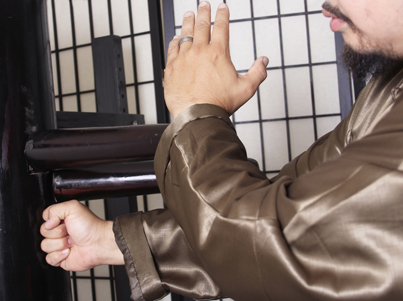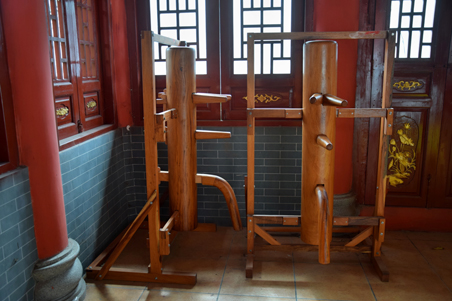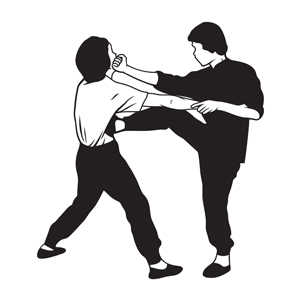Wing Chun: Exploring an Exciting Chinese Martial Art

Wing Chun is a unique martial art that does not conform to the traditional methods of fighting. Instead, it utilizes economy of motion with simple, efficient movements. Wing Chun is based on the idea that a smaller person can effectively use blocking and parrying methods to defend against a larger person. It teaches Wing Chun students to attack while defending vital areas of the body. You might have seen this awesome fighting style in Kung Fu movies like Ip Man or even old Bruce Lee movies.
Mastery of Wing Chun is seen as a lifelong journey, and it is not a martial art learned overnight. Its tenants are deeply influenced by the principles of Taoism, promoting calmness but with balance and simplicity. This comprehensive guide unveils Wing Chun’s essentials, from its foundational techniques to the philosophy of Wing Chun.
Wing Chun Principles

Wing Chun Kung Fu has its core principles centered on defending and attacking along one’s center line. This concept is designed to combine economy of motion with simultaneous attack, defense, and tactile sensitivity to anticipate an opponent’s moves. Timing and positioning are emphasized and favored over speed and power.
Wing Chun is about anticipating an opponent’s attacks and moving before they do in a better position. Unlike some styles of fighting that promote strength and athleticism, Wing Chun is founded on the principle of using the minimum amount of effort to produce an effective result. This philosophy is what makes Wing Chun appealing to many, as it is a martial art that can be used even against stronger adversaries.
The Legacy of Wing Chun
Wing Chun Kung Fu, also known as Wing Chun Kuen, developed approximately 300 years ago during the Qing Dynasty in southern China. The history of Wing Chun is quite special, as it originated in southern China from a Buddhist nun named Ng Mui. She created Wing Chun as a way to develop a new combat method that would be more effective against opponents who lacked Ng Mui’s size and strength. Ng Mui was influenced by Shaolin Kung Fu’s Snake and Crane styles. Starting with this new approach, she trained Wing Chun, focusing on the fundamentals that could be mastered in a matter of months rather than years. Legend has it that Ng Mui defeated a warlord with this new style of Kung Fu and eventually. She later married a man named Leung Bok Chau, and they began to teach Wing Chun in a secret Kung Fu school.
The first student of Wing Chun was a lady named Yim Wing Chun, and as a tribute to Yim Wing Chun, master Ng Mui named the martial art Wing Chun. The name translates to ‘everlasting springtime’, symbolizing the martial art’s emphasis on adaptability and resilience. Yim Wing Chun became a pioneer of Wing Chun spreading knowledge of the new martial art through the Guangdong Province of Southern China.
Ip Man, or Grandmaster Yip Man, is a legend of Wing Chun who learned from the same lineage of students that was taught by Master Ng Mui. However, Ip Man was born many years later, in 1893, in a southern Chinese city called Foshan. Ip Man realized his Wing Chun destiny many years after the creation of Wing Chun. As he migrated from Guangdong Province to Hong Kong, he was responsible for carrying his Wing Chun knowledge over to Hong Kong. From there, Wing Chun eventually became global.
Ip Man has become known as the Wing Chun master who made martial arts known worldwide; there is even a movie depicting his life story. It is played by Donnie Yen, a real-life Wing Chun practitioner and avid practitioner of Chinese martial arts. This is one of the greatest martial arts films of modern times, and I recommend watching it for anyone looking to learn more about Wing Chun.
Wing Chun’s Philosophical Roots
Taoist principles are deeply embedded within Wing Chun’s philosophy. Key concepts include ‘wu wei’ (effortless action), spontaneity, and the strength of softness, underscoring its approach to martial arts. The martial arts align with natural world principles, achieving power through relaxed techniques and energy flow, adhering to Taoist beliefs in harmony and balance.
Practitioners harness the yin and yang concept, symbolizing Wing Chun’s approach to combat, marrying soft deflection of energy with more resistant maneuvers. Relaxation is a key component in Wing Chun as it allows for efficient use of internal power over brute strength, emphasizing the economy of motion. Energy usage in Wing Chun is conservative, ensuring that motion and force are applied effectively with minimal waste, mirroring the Taoist principle of economy.
The Center Line Theory Unpacked
Wing Chun’s center line theory revolves around protecting an invisible line that extends from the top of the head to the feet. This forms the basis for both offense and defense, and it is designed to protect vital organs.
The center line also represents the shortest and most direct path to an opponent. It emphasizes the strategic occupation of the space to gain defensive and offensive advantages by controlling the opponent’s movements while also protecting the body.
In a fighting situation, the Center Line Theory allows Wing Chun practitioners to deflect attacks and exploit gaps in an opponent’s defense, especially when the opponent deviates from or disengages with the center line.
The Wing Chun System: Techniques and Training

The Wing Chun system has a variety of techniques and training methods, beginning with basic forms and gradually advancing to complex exercises, even including weapons training. Wing Chun begins with the Siu Nim Tau form, which teaches foundational hand techniques, the importance of stance, and internal energy development.
After mastering the basics, practitioners advance to the Chum Kiu form, which introduces a blend of hard and soft elements like the Bong Sau that can transition into other movements. The third and final form of Wing Chun is the Biu Jee form, which focuses on finger strikes and is usually taught to advanced students.
Siu Nim Tau: The Foundation Form
Siu Nim Tau, serving as the foundational form of Wing Chun, acquaints students with the basics, correct stance, and cultivation of internal energy. This first form of Wing Chun teaches ideal positioning and body structure, emphasizing the centerline theory, which is key to facing opponents effectively.
Mastering the Siu Nim Tau form through consistent practice is essential for solid home training and is foundational for learning advanced Wing Chun techniques. The form involves:
Slow, deliberate movements
Coordinated breathing
Facilitating the development of internal energy
Proper execution of basic hand techniques
Chi Sau: Developing Reflexes and Sensitivity
Also known as Sticky Hands and Sticking Hands, Chi Sau is a crucial Wing Chun exercise that develops tactile sensitivity and the ability to interpret an opponent’s intent. Consistent practice of Chi Sau teaches students to preserve balance and structure in fighting situations. The exercise is intended to improve their reaction times and hone their capacity to respond to physical instead of visual cues.
Chi Sau, a fundamental aspect of Chinese martial arts, including Shaolin Kung Fu, evolves from foundational techniques to advanced drills, such as. It aids students in developing their reflexes and tactile perception. This practice, beneficial for at-home training, is also applicable to those learning other martial arts.
To perform Chi Sau, practitioners begin by establishing a bridge, which is the initial contact with their partner’s arms. They then roll their arms in a coordinated manner, maintaining constant contact. The goal is to feel the force exerted by the partner and use it to one’s advantage, either by redirecting it or by responding with an appropriate counter-technique.
The exercise is typically performed in a relaxed stance, with practitioners aiming to stay centered and balanced. Movements should be fluid and adaptable, with a focus on using minimal effort to achieve maximum effect. Through regular practice, students develop a heightened awareness of their own body’s position as well as their partner’s. Chi Sau is designed to improve their ability to control the engagement distance and timing in a combat situation. The concept of flowing with a partner’s energy is something Wing Chun has adapted from Buddhist principles.
Luk Sao
Luk Sao, also known as “rolling hands,” is an exercise that is very similar to Chia Sau. It is a two-person Wing Chun drill designed to enhance a practitioner’s ability to maintain contact with their opponent while rolling their arms in a continuous motion. This exercise creates an understanding of energy, flow, and sensitivity, allowing students to feel and redirect incoming force.
Luk Sao is designed to develop reflexes for close-range combat and teach practitioners to stay connected to their opponent’s movements. This is essential for both offensive and defensive maneuvers in Wing Chun. The technique serves as a bridge between basic drills and free sparring, helping students to apply the principles of the center line and refine their techniques in a dynamic, flowing context.
Weapon Mastery: Butterfly Swords and Dragon Pole
Wing Chun teaches weapons training, particularly with butterfly swords and the dragon pole. This serves as a means to amplify empty-hand combat techniques. The butterfly swords are short blades used in Wing Chun to refine coordination and precision, allowing simultaneous blocking and striking.
These movements practiced are similar to the hand-to-hand combat that we see in Wing Chun. The Dragon Pole, extending reach and teaching control of distance and leverage, focuses on linear attacks with minimal circular movements. Although many Kung Fu styles teach weapons training with these weapons, this is directly in line with Wing Chun’s principle of efficiency. Mastery of both butterfly swords and the Dragon Pole is designed to enhance a Wing Chun practitioner’s adaptability and reflexes.
The Journey of Learning Wing Chun

Wing Chun is enriching and gratifying, encompassing the selection of a reputable school or practitioner, understanding home training essentials, and recognizing progression milestones. If you would like to learn Wing Chun, I advise finding a reputable school that can provide proper training and guidance.
The initial training in Wing Chun is crucial and should involve hands-on learning to feel and understand the movements. It takes time to master Wing Chun, so you will need to find an academy that has a solid background in Wing Chun. It is essential that the master teaching you Wing Chun has at least a few years of experience, as a master without experience will struggle to teach Wing Chun effectively.
Beginner Wing Chun students should expect to invest about two years to learn the core system of the martial art before actually becoming a skilled Wing Chun practitioner.
Selecting a Wing Chun School or Practitioner
In the process of choosing a Wing Chun school, make sure it aligns with your objectives. Consider if it is for sports, self-defense, or internal growth, and check for affiliations with reputable organizations and certifications. The qualifications of a Wing Chun instructor should include a structured training plan, the ability to progress all students, respect from the community, and concern for students personal growth. It is important to select a school that is attentive and avoid Wing Chun academies with questionable sparring practices or secretive techniques.
Consider practical factors like the school’s location for ease of consistent attendance and the availability of transferable memberships for flexibility. Evaluate the school’s culture by observing interactions between students and instructors, and make sure there’s a welcoming community that supports your learning and personal growth. These are all important factors to consider when looking for a Wing Chun school, but most of all, make sure you enjoy training there, and you will develop your skills drastically.
Progression and Milestones
The foundation phase of Wing Chun training typically lasts between 6 months and 1 year. It focuses on basic stances, hand techniques, footwork, and the first form, or Siu Nim Tao. During the intermediate phase, which spans 1 to 2 years, students refine techniques, improve timing, and develop sensitivity through drills.
In the advanced phase, practitioners engage in:
realistic sparring and partner drills
explore complex forms and strategies over a period of 2 to 4 years
aim for mastery of Wing Chun’s traditional weapons
Mastery of Wing Chun is seen as a lifelong journey, with several years required to achieve proficiency, but true mastery is a continuous process of development.
The quality of instruction and choice of Wing Chun school are critical for progression. Experienced and dedicated instructors will offer more personalized guidance and feedback.
Wing Chun for Self-Defense and Fitness

Wing Chun provides practical benefits for self-defense while also being a great way to improve physical fitness. It is effective in combat situations and closed spaces. The fear of injury in Wing Chun practice is mitigated through respecting the opponent, controlling movements properly, and training at a personal pace using specialized equipment.
While practicing or sparring in Wing Chun, the risk of sustaining injuries is present, but they are typically minor, such as bumps and bruises. The art’s emphasis on timing and positioning over speed and power means that its aim to neutralize threats through rapid, adaptive attacks, keeping opponents defensive, makes it a formidable tool for self-defense.
Practical Self-Defense Strategies
Wing Chun emphasizes simplicity, reducing movements to their basic form for efficient self-defense. Its practical concepts allow practitioners to apply techniques effectively in confrontations. It excels in close combat and confined spaces, making it effective for street defense. Sparring in Wing Chun builds resistance to high pressure situations and teaches students to adapt through adrenaline management.
Enhancing Physical Health with Wing Chun
Wing Chun practice can lead to weight loss, improved cardiovascular health, and improved coordination. It enhances speed and power, allowing the body to handle stress. Regular training improves physical fitness, muscle memory, and instinct and aids in eye focusing. This is especially beneficial for reflexes and overall awareness in daily life.
Cultural Impact and Notable Figures
Wing Chun’s influence extends beyond the realm of martial arts, permeating media and popular culture. The martial art has been popularized worldwide, particularly through the Ip Man film series, starring Donnie Yen as the titular character. Notable figures in various professions, such as celebrated actor Robert Downey Jr., credit Wing Chun for much of their physical and mental well-being, showcasing the influence of martial art.
Grandmaster Yip Man is credited with popularizing Wing Chun and is recognized as a key historical figure in this martial art. The efforts of Yip Man and the Ving Tsun Athletic Association have led to the proliferation of Wing Chun worldwide, particularly through the Ip Man and Yuen Kay-shan lineages.
Wing Chun in Film and Media
The Ip Man film series, with Donnie Yen in the lead role, played a significant role in rejuvenating interest in Wing Chun during the 2010s. Donnie Yen’s portrayal of Ip Man in the film series has not only popularized Wing Chun but has also sparked increased interest in Ip Man’s life and the martial art’s lineage.
Wing Chun has significantly influenced fight choreography in movies, especially in scenes that require close-quarters combat and demonstrate efficient techniques. Wing Chun’s presence extends into the digital world, with characters like Leroy Smith in the video game Tekken 7, who uses this martial art as his fighting style.
Frequently Asked Questions
Is Wing Chun good in a real fight?
Yes, Wing Chun can be effective in close-range combat scenarios; however, as we have not seen it contested much in tournaments and sports, its effectiveness is often questioned.
Did Bruce Lee use Wing Chun?
Yes, Bruce Lee did use Wing Chun in his early martial arts training with Wing Chun master Yip Man at age 13 in Hong Kong. This experience later influenced the development of his own martial art, Jeet Kune Do.
How is Wing Chun different from Kung Fu?
Wing Chun is a form of Southern Chinese martial arts that focuses on close-up fighting, while Kung Fu is a broad term that encompasses a variety of Chinese martial arts.
Is Wing Chun a form of kung fu?
Yes, Wing Chun is a form of kung fu that has been refined and adapted over its 300 years of existence.
What is the focus of Wing Chun Kung Fu?
The focus of Wing Chun Kung Fu is to defend and attack along one’s center line, using economy of motion and combining attack and defense to anticipate an opponent’s moves.
Summary
Wing Chun Kung Fu is more than just a martial art; it’s a comprehensive system for personal development, wellness, and self-defense. Its unique combination of Taoist principles, adaptability, and efficiency makes it a powerful tool for real-life confrontations.
Whether you’re looking to start your journey in martial arts, improve your self-defense strategies, or enhance your physical health, Wing Chun offers a rich and rewarding path. Just remember, true mastery in Wing Chun is seen not as a destination but as a lifelong journey of continuous learning and self-improvement.










Pingback: Silat: A Powerful Martial Art Blending Culture and Combat